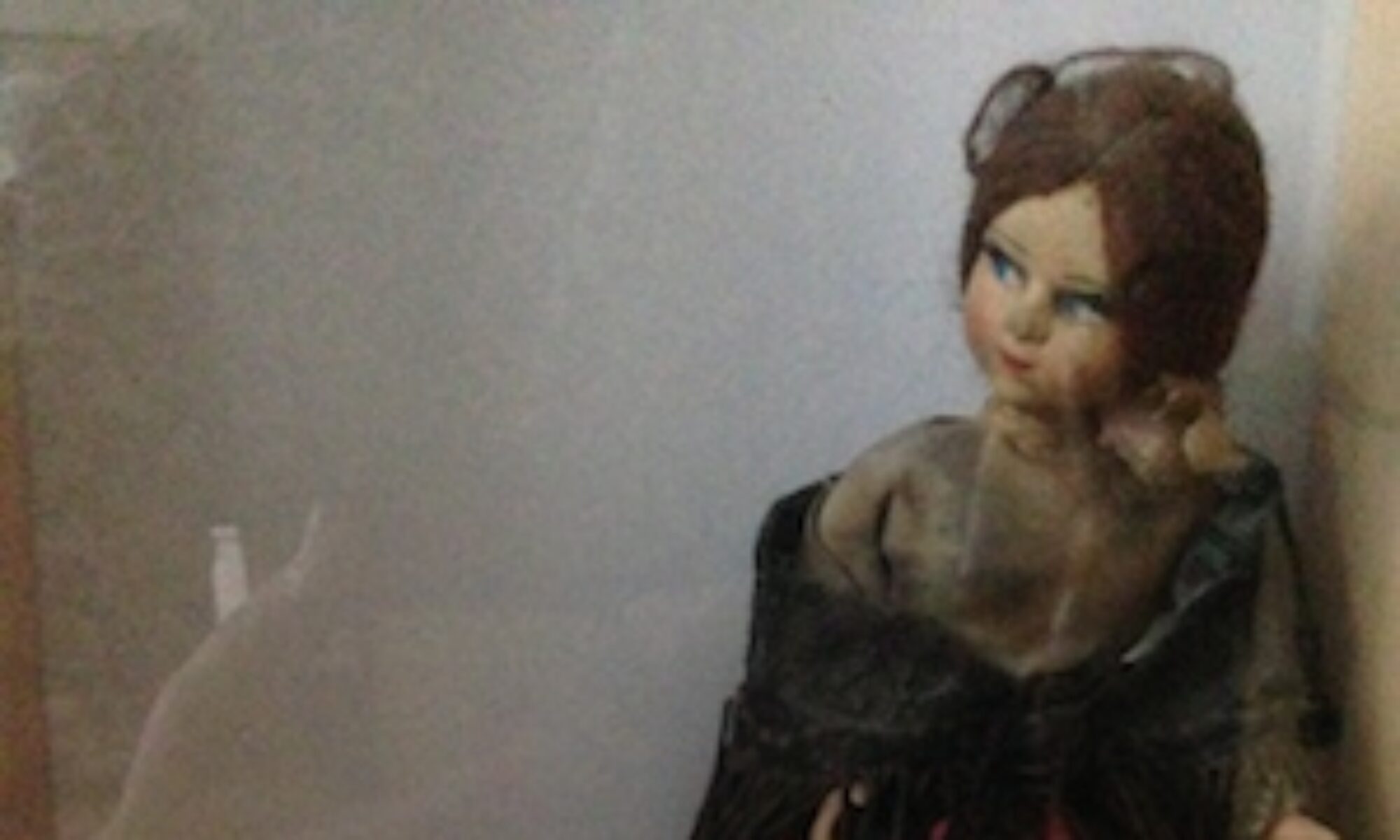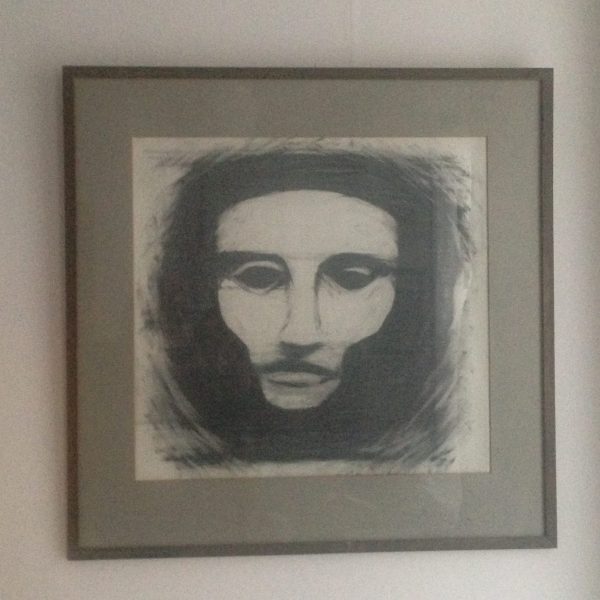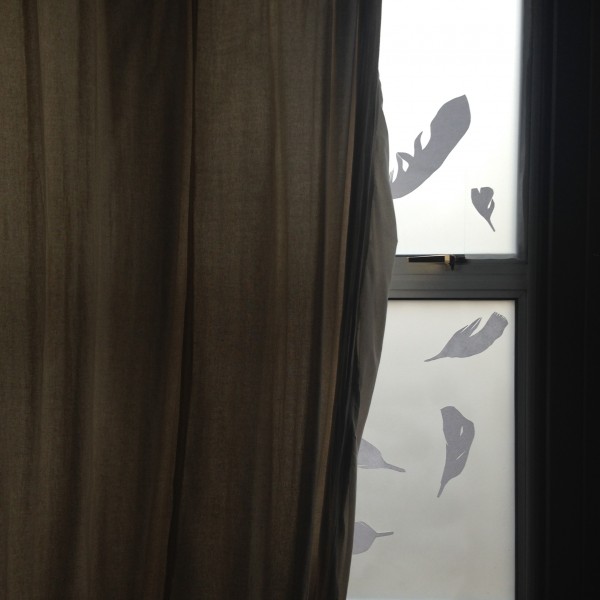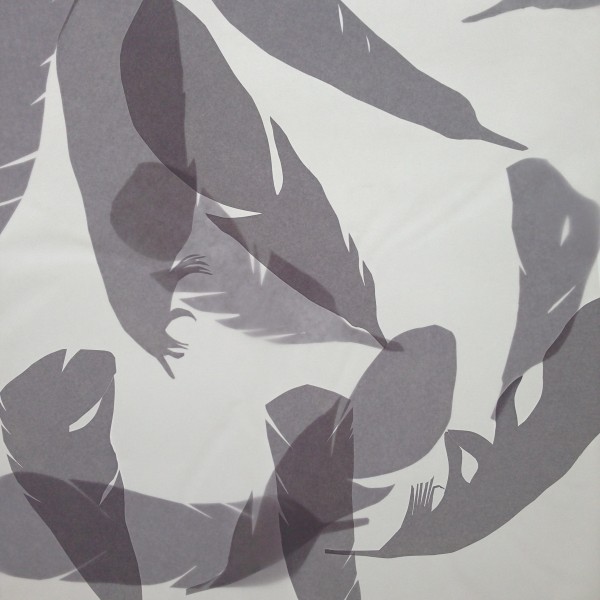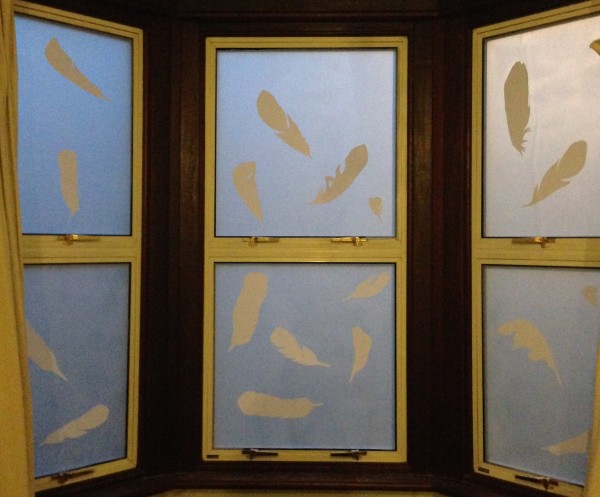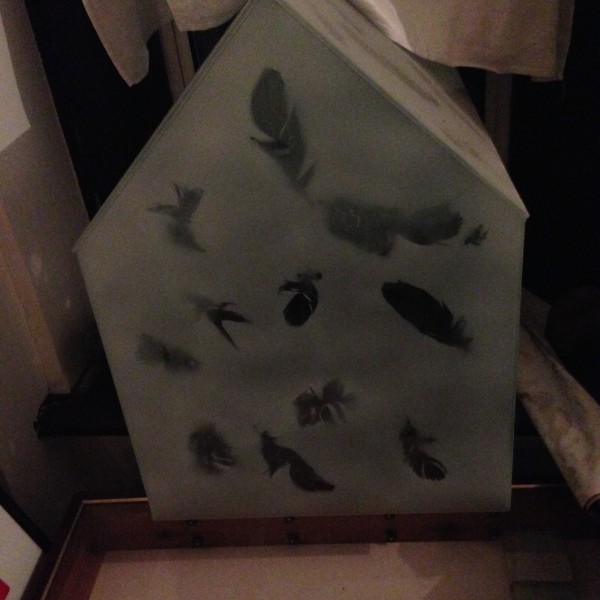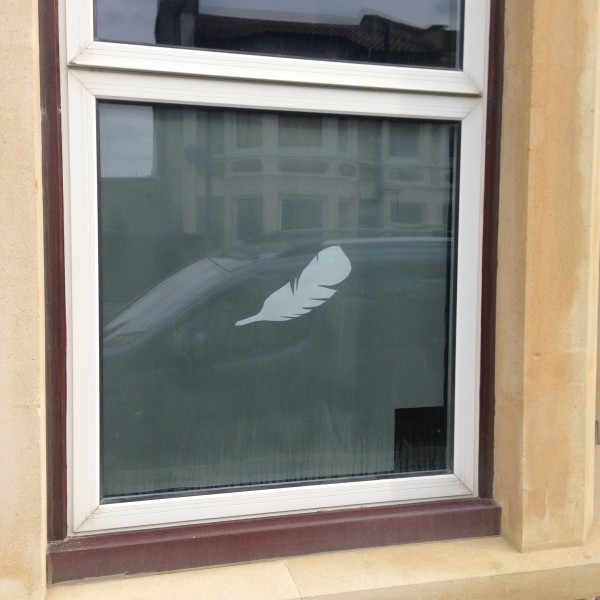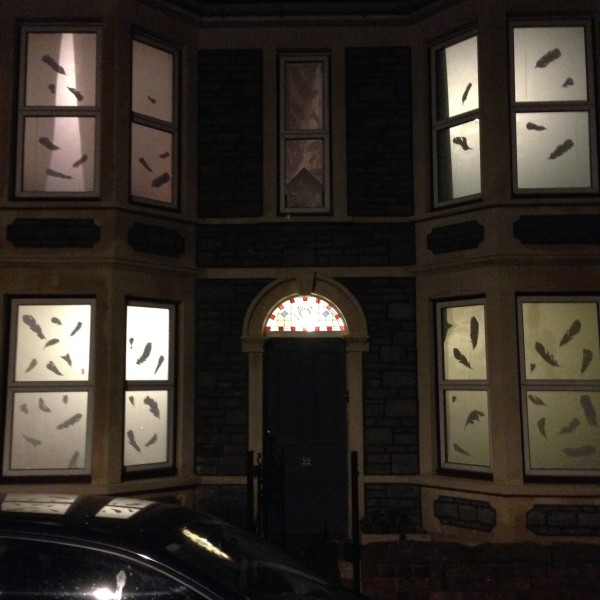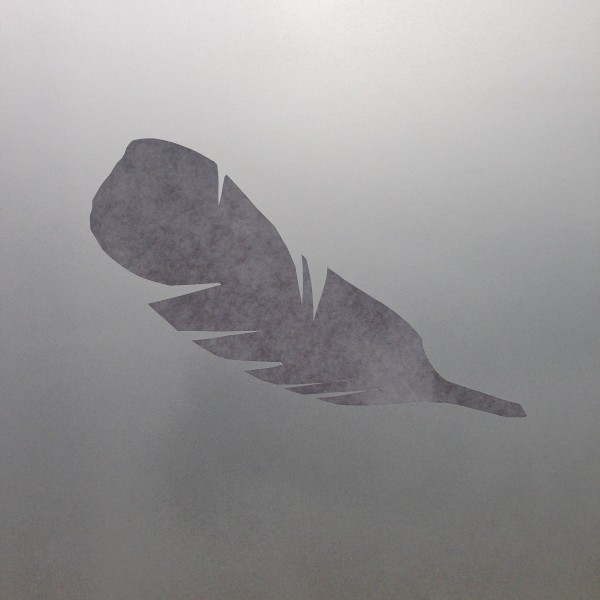Today I got to play with glass and make things – not stained glass (did it once, made a panel, didn’t like all the splinters) or blown glass ( got offered an apprenticeship once by a flirty glass blower on the Isle of Wight) or melting glass panels. Instead I got to play with a rather unusual and wonderful glass paste that you can roll out like royal icing and cut into. It was at UWE’s Centre For Fine Print Research Make:Shift:Do 2017 – open doors day and it was fascinating to wander round and see how 3D print and AI/Machine Learning are now part of their research, alongside more tradional activities like cyanotype printing and artist book-making.
So, today I was lured down to Bower Ashton by the description of the glass paste workshop – “Shape and print into glass with normal household items at room temperature.” Sounded intriguing and it was. Even more delightful was that the drop-in workshop was run by Susanne Klein, who I first met working at HPlabs Bristol, and who has given talks about her research to Bristol Girl Geek Dinners.
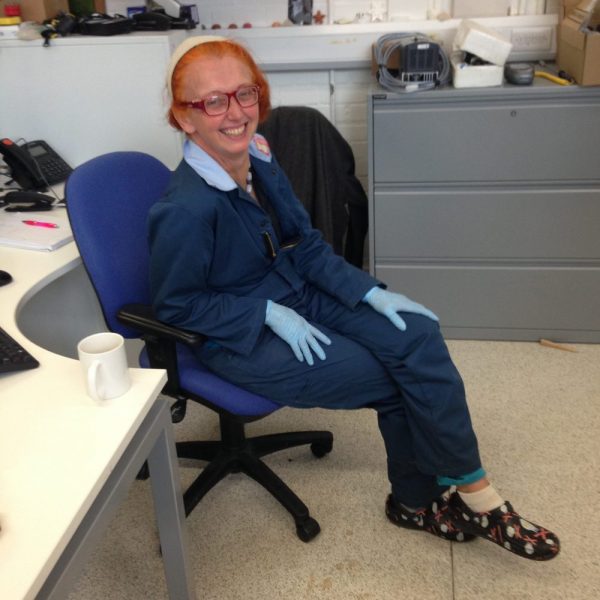
Turns out, it was Susanne who basically invented the glass paste we were going to use – it’s a mix of ground glass, water and a powdered material that burns away in the kiln, and only has to heat to 800 degrees. Susanne showed me how to mix the three ingredients then knead and roll out the paste – just like making icing!
I picked a few simple shapes and pressed into them with some basic tools, had a go at freehand shapes then chose one of Susanne’s pre-made linocuts to play with, impressing it into the paste with a rolling pin then cutting round it. I tidied up the edges and sprinkled coloured frit (powdered glass) onto the white paste – I could have made coloured paste, just like icing, it depends what colour glass powder you mix. Now all I have to do is wait and see how they come out the kiln. My head is full of other ideas I could try out – theoretically I could do the making at home and then firing elsewhere, as long as was careful about breathing in glass dust or spreading it around the house.
Here’s a couple of the freehand pieces, a moon and a feather.
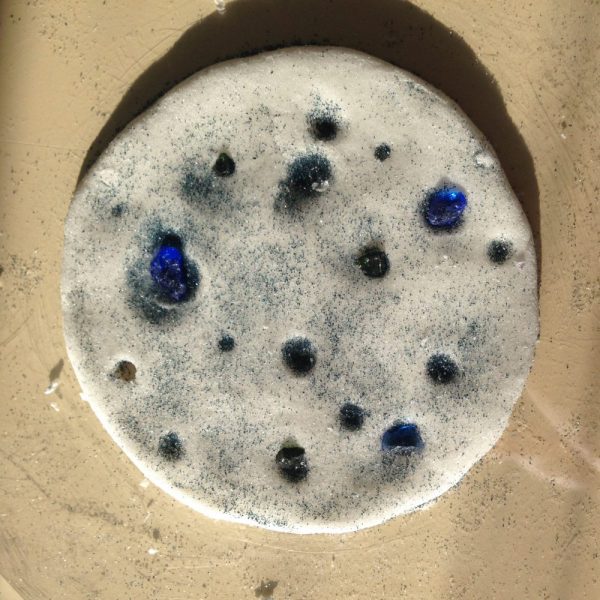
I couldn’t get the paste to hold a fingerprint impression so I focused on playing with dents and putting frit and glass chips in them to see what they’ll look like after the kiln.
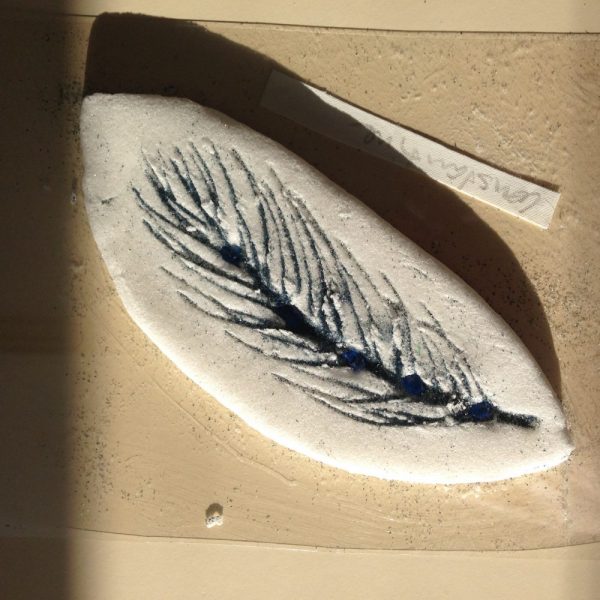
Had to make a feather. I don’t have photos of all the pieces I made; can’t wait to see how they come out though.
I did also enjoy wandering around where I studied Fine Art, trying to see what was still there, what has shifted location and what has disappeared (bronze-casting and welding have gone). It got me thinking about the response from tutors to a few of us who were exploring photography and computers and incorporating them in our work and how it was definitely not encouraged (1989-92). Things have changed.
